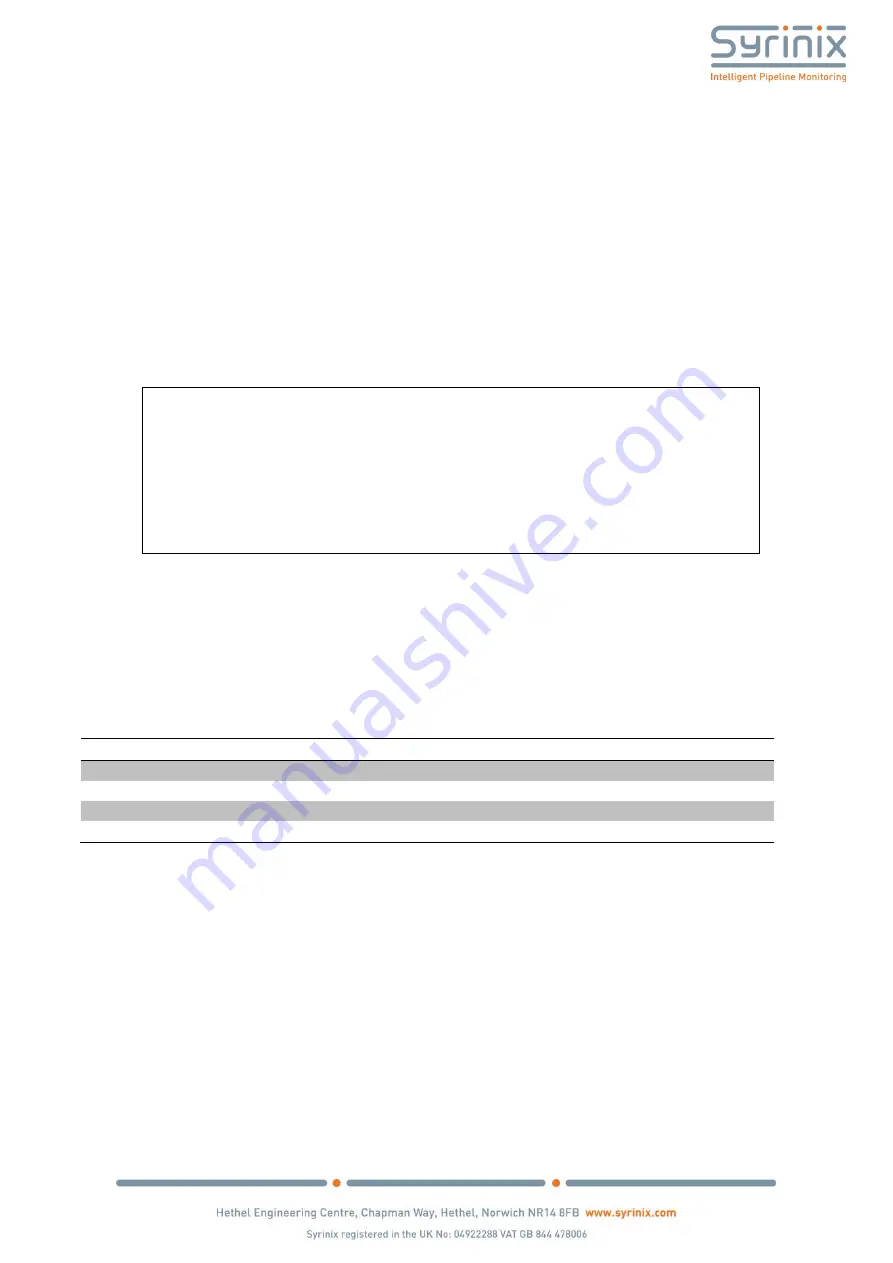
Page
19
of
32
6.10
USB Data Removal and Upload
When the device is connected via USB the Device Manager application may be used to copy files from the
device.
1.
Connect a battery to the PIPEMINDER-S (USB power is not sufficient when copying files off);
2.
Connect the PIPEMINDER-S to the PC using the supplied USB lead;
3.
Start Syrinix Device Manager;
4.
Select device on Transfer Files tab;
5.
Select files to download either directly or by using the bulk selection tool in the bottom left;
6.
Click Download Files or Delete File (if you want to delete them);
7.
Some files (FILExx.DAT where xx = 00 to 29) are read only and cannot be deleted.
IMPORTANT:
•
Once complete, disconnect battery and USB connection
–
PIPEMINDER-S must be
power cycled before redeployment.
•
The USB port in PIPEMINDER-S is disabled after 30 minutes of inactivity.
•
PIPEMINDER-S will have to be restarted before a USB connection can be made.
•
If measurement of clock drift is required then the procedure in section 8.2 must
be carried out before PIPEMINDER-S is power cycled.
•
To avoid duplicate filenames, separate folders should be used in step 7 above.
Data files copied from PIPEMINDER-S may be uploaded to the RADAR via "Upload Device Data" on the
Manage menu of RADAR. The files themselves contain all of the device information for import by the
RADAR. Multiple files can be zipped together before upload.
Table gives a description of the files which, depending upon configuration, may be found on a PIPEMINDER-
S device.
Example Name
Approximate Size
Description
10212019.TNS
50 KB
Transient or burst file, 128 S/s, 21st Oct at 20:19
DL141020.DAT
2 KB
Daily Log file, 1 S/15mins, 20th Oct 2014
FILExx.DAT
21.92MB
30 days of 128 S/s data stored in 30 files, loop.
10212114.DFT
256 B
Drift Test Results, 21st October at 21:14.
Table 6: File Formats
Despite the cryptic names, internally the files follow a common structure where data is interleaved with
markers containing device information, drift information, GPS location, fault information etc. When the data
is imported into RADAR the file name is irrelevant as all the required information is in the file itself.
The files stored on the device are identical to those sent over the modem, providing it was configured to send
them and a cellular signal was available. The data upload functions on RADAR ignore repeated data blocks so
it is safe to upload all of
the files using the “Upload Device Data” feature on the Manage menu in
RADAR.
Содержание PIPEMINDER S
Страница 1: ......
Страница 10: ...Page 10 of 32 4 System Components...
Страница 11: ...Page 11 of 32 Figure 2 Device overview 101667...
Страница 14: ...Page 14 of 32 Figure 4 Configuration editor on RADAR...




























